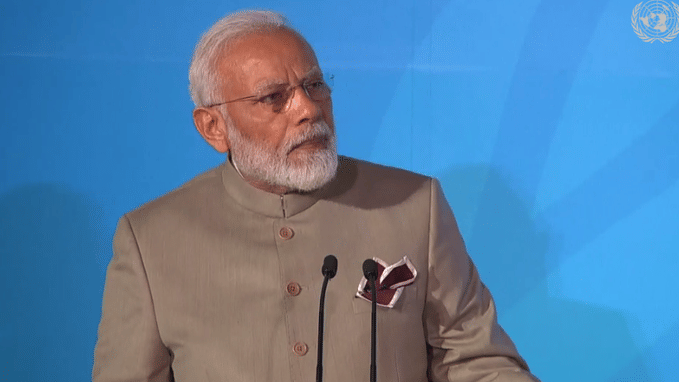Fragility is a state of affairs, consisting of many economic, social, demographic, political, environmental, and security-related pressure points that either strengthen or weaken a nation state. Countries around the world have been subject to various pressures over time which have led to changes in their fragility. If fragility is left unchecked, the nation can slide towards civil war and break up.
The overall fragile states index (FSI) is derived from twelve subindices which are: demographic pressures, economic inequality, economy, external intervention, factionalized elites, group grievance, human flight and brain drain, human rights, public services, security apparatus, state legitimacy, and refugees and internally displaced persons (IDPs).
According to the 2018 FSI, the five most fragile countries are South Sudan, Somalia, Yemen, Syria and the Central African Republic in decreasing order of fragility. At the other end of the spectrum we have strong democracies such as the Nordic countries, Singapore and other advanced countries.
India’s overall fragility increased from the ninety-third rank in 2006 to the seventy-second rank in 2018. India’s slide by twenty-one ranks over this period was mainly driven by uneven development (such as rising income inequality), human flight and brain drain, state legitimacy, demographic pressures and security apparatus.
Also read: Desperate to move fast and break things, Modi acts first and thinks later
These are explained below:
Uneven development considers inequality of income distribution regardless of the rate of economic growth. India has one of the most unequal distributions of income in the world. The uneven development indicator not only considers actual inequality but makes qualitative assessment on perceptions of inequality that can feed group grievance or reinforce tensions between groups. The indicator also measures economic opportunity such as the extent of free education, equal education opportunity, fair housing for the poor, job training, etc.
Research shows that income inequality in India has increased significantly since the mid-1980s. When income inequality worsens at such a pace, it is bound to lead to an increase in fragility. Income inequality is typically measured based on income data collected through official surveys of households. Where governance is weak and black money income is high, official surveys understate the income of the upper income groups because they do not report their actual income (including the black money component).
In other words, actual income inequality which takes account of black money incomes is significantly worse than income inequality based on official surveys of household incomes. This, in turn, understates the uneven development component of the FSI.
Human flight and brain drain is partially evidenced by the rising number of applicants for US H1-B visas, the increasing number of illegal Indians trying to enter the US from Mexico, and the rising tide of Indians seeking to emigrate.
The illegal immigrants are mostly poor Indians with little or no skills. In contrast, recorded immigration involves skilled and educated workers looking for better opportunities abroad. These immigrants are mostly located in India’s larger cities. In fact, human flight and brain drain are happening in spite of the higher economic growth rates in the postliberalization era.
Also read: Democracy devouring itself, people too stupid to sustain it — academic paper creates furore
State legitimacy considers the extent of openness of the government (i.e., transparency of operations). How open are the elites, who are close to power (called ruling elites), to transparency with regard to their business operations and taxes? Are they held accountable for their actions, for corruption, profiteering and marginalizing, persecuting, or otherwise excluding opposition groups? Other aspects of state legitimacy consider the population’s level of confidence in state institutions, whether riots and uprisings occur and with what frequency, and whether people consider elections to be free and fair.
State legitimacy also assesses the scope and frequency of political violence, armed insurgencies, and terrorism. India has had a long history of various armed insurgencies, political violence and riots. A very low score on the political stability and absence of violence component of the WGI is entirely consistent with a worsening score on the state legitimacy sub-indicator of the FSI. When I was attending college in Calcutta in the early 1970s, the city was racked by violence perpetuated by the Naxalites. Prominent signs and wall paintings of Mao Zedong were appearing all over the city proclaiming ‘Lal Salaam’ (Red Salute) or ‘Chairman Mao is our chairman’. Even at the ripe old age of eighteen, I could not figure out why Chairman Mao should be our chairman! This was shortly followed by some other communist group marching down the streets shouting in Bengali ‘Amar Naam, Tomar Naam, Vietnam’ (literally, my name and your name is Vietnam, implying there is solidarity between the common man and the revolution in Vietnam). Although these ridiculous sound bites failed to resonate with the masses, it would not be wise of the government to ignore the reasons why these kinds of grievances exist in our society.
So, even after systematically destroying the Naxalite movement, there are still pockets of Naxal activity in some states in India. This is true for other insurgent movements as well. The government has tried to address the legitimate causes for grievance with some degree of success. However, there are other reasons or demands which simply cannot be accepted by any democratically elected government under the Constitution of India. Today, West Bengal’s reputation for dirty politics has sunk to a new low after Mamata Banerjee came to power in 2011.
Also read: Three reasons why Modi took the path of social reform instead of economic reform
Demographic pressures capture population pressures in relation to food supply, access to safe drinking water, energy requirements and other life-sustaining resources. This indicator also considers demographic characteristics such as pressures from high population growth rates or skewed population distributions.
For example, more than half of India’s population is under the age of twenty five. A high proportion of young population is known as a youth bulge or a demographic dividend. But a youth bulge, or sharply divergent rates of population growth among competing communal groups, can have profound social, economic and political effects. Moreover, while a youthful population can be more productive, the youths need to first find employment.
If government policies are not able to encourage the private sector to create more jobs, that demographic dividend can easily turn into a demographic curse. Beyond the population, the indicator also takes into account pressures stemming from natural disasters (hurricanes, earthquakes, floods or drought), and pressures upon the population from environmental hazards.
The main findings for India are that there has been an increase in fragility since the BJP came to power. India was ranked seventy-ninth among 178 countries in overall fragility in 2013, the last full year when the Congress was in power, increasing thereafter to the seventy-second rank in 2018. However, India’s fragility increased even more under the Congress from a rank of ninety-third in 2006 to a rank of seventy-ninth in 2013.
 This excerpt from Dev Kar’s India: Still A Shackled Giant has been published with permission from Penguin Random House India.
This excerpt from Dev Kar’s India: Still A Shackled Giant has been published with permission from Penguin Random House India.







I would urge people to read the book first. This is not written by a “Western” think tank or economist. Very much an Indian. When you are writing as an economist, you have to forget your personal biases and preferences. I tried to write objectively. What the data show is that fragility increased much more under the Congress than it did under the BJP. In fact, since the BJP came to power in 2014, the decline slowed down perceptively. Instead, ThePrint excerpt did not present the full story. So, it is best to read the book and form your own opinion. Commenting without reading makes no sense.
If one goes by Western opinions, India should have broken up in the 50s, 60s, 70s, 80s, 90s etc. Not sure what is the domain expertise of these bodies/organisations which come up with these indices. Past time that India loses no sleep over such rankings, although they make for good media copy.
No country with civilisational legacy, heritage, democratic system and reasonable economic might would have media that would put these kinds of reports on front page. Fragility index – WOW!!! Most trashy way of weighing, supported by vague Western organisations. Putting China, India, Russia as having stability issues. Tell this to Xi Jinping and he would die laughing. By the way does he ever laugh? Tell this to a Chinese citizen, and he will raise his/her eyebrows. But tell this to a leftist, communist, Congressi in India, then see the reaction. Arre baba, India is on deathbed, get rid of Modi. Laughable!!!!
They are putting United Kingdom under stable category, a region that will soon be Englishtan (country), Scotland (separate country) and perhaps even Northern Ireland breaking away merging with Ireland post-Brexit. But as I said, liberals in India too love sensational news, as long as it pulls down the current government. Remember the intolerance campaign.
Congress Party with a Christian’s as leaders and Muslim as support base are spreading dirty lies. They use third rate NGOs to do the research and come up with worthless indices.
Curious: What’s Britain’s fragility ranking post-Brexit? Scottish independence might have a domino effect on Spain, India and many other parts of the world. The overall fragility might be increasing too.
Waiting for Indian universities to start post graduate courses in Whataboutery.
Migrate. India is about to collapse. China or Pakistan are two great choices…for you. Alternatively join Congress and plead with Sonia to give you a chance to reinvent Congress and this country. UP may be a good starting point…for you.
Foreign governments / investors / media track these changes. A rerating of India has taken place. Changing these perceptions will require the reality on the ground to improve. Talks to think tanks do not work.
“Talks to think tanks do not work.” – the wise man’s conclusion. Believe it.
India used to be a Titan and fragility index was very low under Nehruji. He was leader not only to India but to China Pakistan and other parts of world. He took care of Pakistanis need for water by giving more than 80 percent of indias share also and provided them with more land by giving away Mirpur Gilgit and baltistan. For China he gifted Tibet Aksai chin keeping them happy. By doing all that India was strong. We miss Titans like Nehruji….